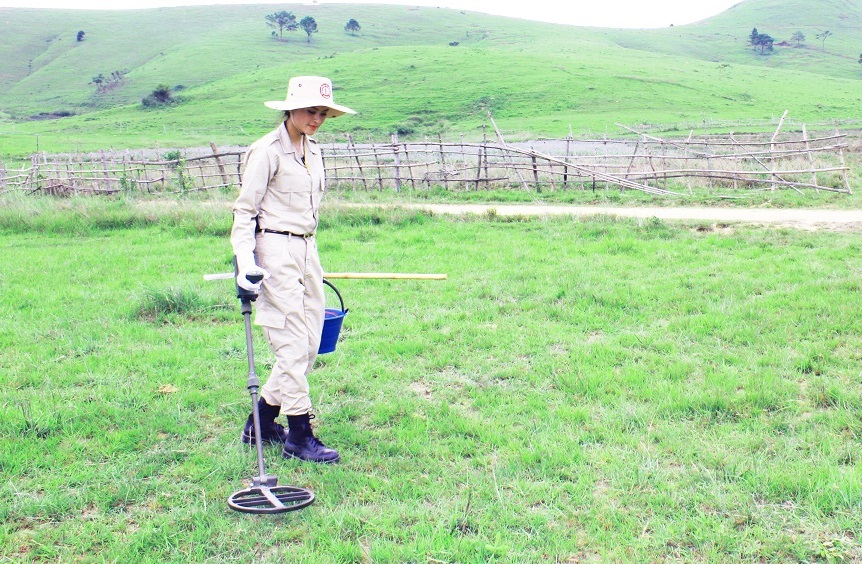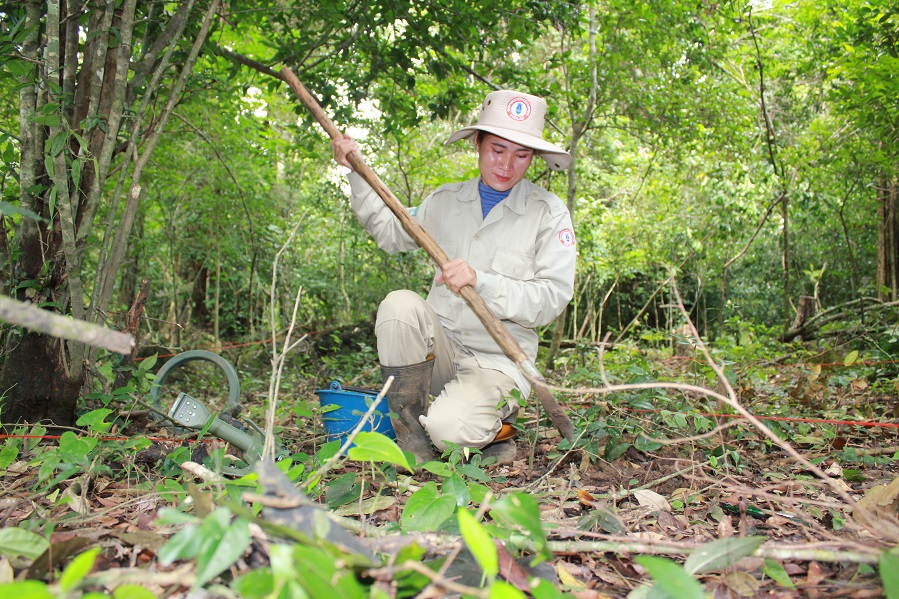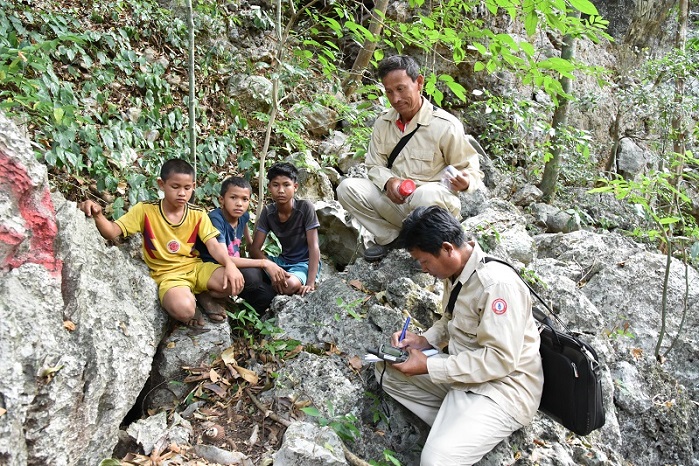
Background of UXO in Laos
Lao PDR is, per capita, the most heavily bombed country in the world. More than fifty years after the end of the Indochina Conflict during 1964-1973, unexploded ordnance (UXO) remains a major obstacle and socio-economic challenge to the country, causing deaths and injuries, limiting access to potentially productive land and adding substantial costs to processes of development. The Government of Lao PDR has been active in the process of clearance since shortly after the conflict. Lao PDR has advocated for the Convention on Cluster Munitions (CCM) and hosted the first Meeting of States Parties in 2010. It also embraced the UXO issue as a key development matter by locally establishing the Sustainable Development Goal 18 (SDG18), “Remove the UXO obstacle to national development”.
The current National Strategic Plan for the UXO Sector in the Lao People’s Democratic Republic 2021 – 2030, “The Safe Path Forward III” (SPFIII), demonstrates the efforts, proactivity, and responsibility of the Government of Lao PDR to address remaining UXO contamination. This process of addressing the UXO issue simultaneously involves creating opportunities and facilities for development, protecting and assisting Lao ethnic groups living in high-risk areas, and demonstrating high efforts in regional and international integration to increase cooperation in the implementation of UXO actions. In all matters related to implementing Safe Path Forward III, the Lao Government remains committed to integrating regional and international policies, strategies, and conventions in order to contribute to future growth and effectiveness within this sector.
UXO Lao maintains its national office in Vientiane. It operates in nine of the most UXO impacted provinces in the country (Huaphan, Luang Prabang, Xiengkhuang, Khammuane, Savannakhet, Salavan, Sekong, Champasak and Attapeu). In every province, the provincial office works closely with their respective Provincial Department of Labour and Social Welfare coordinates with other departments such as Foreign Affairs, Education, Agriculture and Forestry for work planning purposes.




UXO Lao Achievements
Explosive Ordnance Risk Education task
Conducted Explosive Ordnance Risk Education activities in over 14,000 villages, reaching more than 4,900,000 audiences (including more than 2,100,000 children).
Area Clearance task
Cleared over 58,000 hectares of land, including 52,000 hectares for agriculture and 5,900 hectares for other development projects.
Technical Survey task
Established more than 6,700 sites of Confirmed Hazardous Area (CHA), covering more than 59,000 hectares of CHA, including more than 58,000 hectares for agricultural land and more than 1,100 hectares of land for other development activities.
Total UXO Destroyed (through roving/clearance tasks)
Destroyed more than 1.89 million UXO items, of which, over 1 million items were cluster munitions, and more than 800,000 items were other types of UXO including aircraft bombs, landmines and other munitions).
Non-Technical Survey task
Conducted non-technical survey task for collecting information of all UXO-related data on a village by village basis to identify UXOs’ coordinates or evidence points, and mapping out UXO in more than 900 villages. Over 23,000 UXO items found.
Roving Task
Conducted more than 39,000 roving tasks, removed or destroyed over 1 million UXO found on the land surface in more than 4,000 villages.
Progress Summary Report of UXO Lao from 1996 to 2025
UXO Lao and the National Regulatory Authority for UXO/Mine Action Sector in Lao PDR (NRA)
Our Partners
-
Quarterly financial monitoring of the project, both in terms of progress of activities and expenditures and of conformity of activities with stated mandate and work plans;
-
Contracting for yearly external financial and management audits of UXO Lao, with full reporting to donors and other stakeholders, thereby confirming full accountability and transparency of UXO Lao accounts and practices;
-
Provision of a coordination mechanism for donors, and between donors and the Government of Lao PDR, in order to ensure that support to the UXO programme is channelled as and where it is put to best use for the ends of the programme;
-
Procurement needs of UXO Lao.
